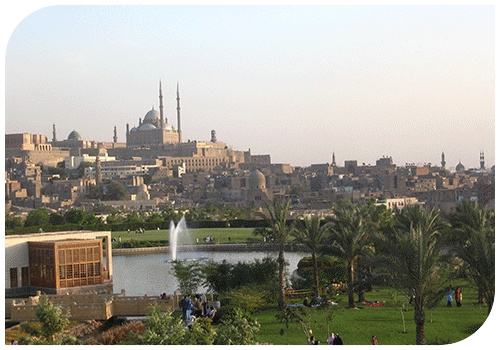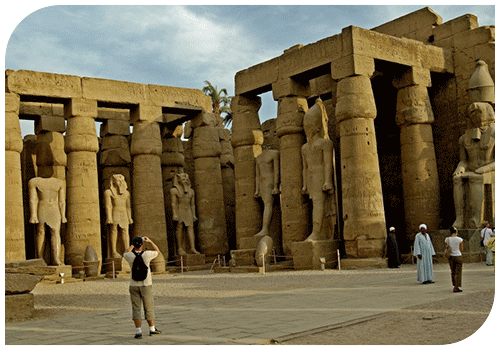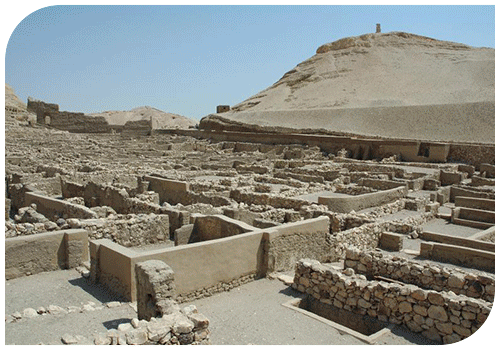It isn’t an exaggeration, the city of Luxor in Egypt is considered the best open air museum in the world.
If after passing through Cairo you want continue taking in the amazing history of this country, don’t even hesitate for a moment to visit Luxor, “The City of A Hundred Gates”. It will enrich your Egyptian experience with all its pharaonic glory.
From Cairo to Luxor
Before visiting the city of Luxor, be aware that Royal Holiday, with its Hotel Sonesta Cairo, will serve as your accommodation between the Egyptian Capital and the ancient Thebes.
You have three options to get to Luxor from Cairo. The first option is to travel by plane in a 1 hour flight. The second option is to travel by car 664 km for 8 hours. The third option is to travel by train for 10 hours, which will be a very good way to see rural Egypt along the Nile River overlooking crops and villages.
The Nile River divides the city of Luxor in two: the east and the west. The eastern area symbolizes life, the modern part of the city has been developped here. The western area, according to ancient Egyptian mythology, represents death and it is where the Necropolis and Mortuary Temples are located. Ancient Egyptians believed that the setting sun in the west symbolized the journey to the afterlife and they therefore arranged everything for the departure of the Pharaohs to eternity on the west side of the river.

The east side of Luxor
Find the city of the great temples of Egypt in Luxor, among shrines, chapels, obelisks, pylons, colonnades, halls, lobbies, hypostyle halls and sphinxes that tell the history of Pharaonic Empire and even other empires that occupied the territory like the Greek, Roman and Muslim empires.
When you visit the temples we recommend having a web architecture dictionary on hand, unless you know what a hypostyle hall is…
Karnak Temple, located on the east side of the city, is the largest in Egypt with a perimeter of more 2000 meters and a huge wall, which is several meters thick. The temple was built between the XXIII and XXIV centuries BCE by order of pharaohs Hatshepsut, Seti I, Ramses II and Ramses III. Karnak Temple contains within it the Great Temple of Amon. Among many wonders, it has an hypostyle hall of 5,000 square meters with 134 columns. The light show at the Temple is famous throughout the country, try not miss it.
Keep in mind that in Karnak Temple and many other temples of Egypt there are guided tours.
The Temple of Luxor, also located on the east side of the city, took hundreds of years to build. Also dedicated to the god Amon, it was built between the XI and XV centuries BCE by order of the Pharaoh Amenhotep III and Ramses II. In the past, the Temple of Luxor was connected to the Karnak Temple across the Avenue of Sphinxes, a journey along 3 kilometers lavishly adorned with hundreds of sphinxes. One of the best known stories of the Temple is that one of its obelisks is located in Paris, right on La Concorde. The temple of Luxor also shows traces of Roman and Christian cults, as well as the Muslim era through the Mosque of Abu el-Hagag.

The west side of Luxor
If you cross the Nile to the west side, you’ll find the Necropolis of Thebes, an area that was used for the burial of kings and nobility.
This is the home of the famous Valley of the Kings, where most pharaohs from the New Kingdom were buried. There are also tombs of queens, princes and other noble figures. So far 62 tombs have been discovered in the Valley of the Kings. From the tomb of Ramses VII opened by the Greeks, to the tomb of Tutankhamun discovered packed with treasures only 100 years ago, its treasures are on display in the Egyptian Museum.
The Southwest Valley of the Kings is the Valley of the Queens, with tombs of queens and princes of dynasties XIX and XX. There are a total of 98 tombs carved into the rock.
You’ll also learn about the Valley of the Artisans (Deir el Medina), where the workers who built the tombs of the Kings lie buried and lived isolated in order to maintain secrets of what the royal tombs hid.
The mortuary temple of Queen Hatshepsut in the complex of Deir el-Bahari is also a place you can’t miss. Its unique design of terraces and patios harmonizes with the side of the mountain. The Ramses III mortuary temple reliefs are in very good condition and tell the story of Egypt under the reign of this Pharaoh.
And if giant stone sculptures are your passion, visit the Great Colossi of Memnon south of the Theban Necropolis. Its curious name is taken from Memnon, the Greek hero King of Ethiopia who participated in the Trojan War.


